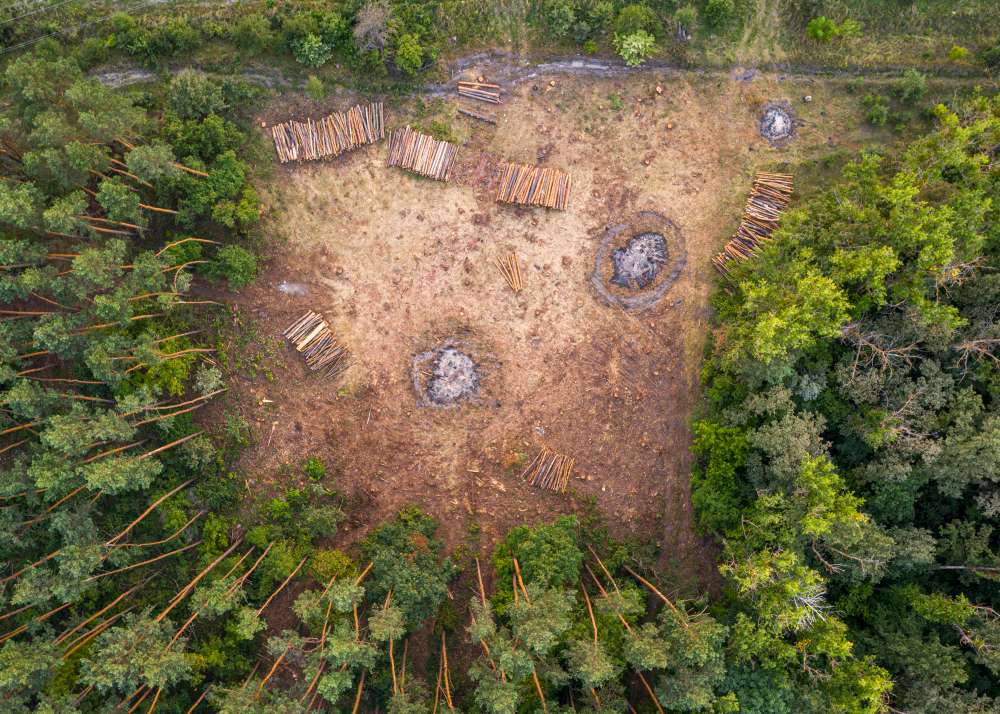Biodiversity is the level of variety in life on Earth. It plays a vital role in supporting us. Without biodiversity, our own species would not survive. As we push hard against the limits of the natural environment, more and more habitats are being destroyed.
The Living Planet Report 2022 is a comprehensive study of trends in global biodiversity and the health of the planet by the Worldwide Fund for Nature. It reveals an average decline of 69% in wildlife populations since 1970. This is alarming.
What Is Biodiversity Loss?
Biodiversity loss is a reduction in the populations of wild plant and animal species on Earth. It includes the local reduction or loss of species in certain habitats, or at worst complete extinction of a species. Biodiversity loss can happen in many ways, including these:
Habitat Destruction
When we take away the natural habitat of a species, we essentially remove the species from the environment. As communities and ecosystems form around specific species and their habitat, removing that habitat has dire consequences for the integrity of the community.
Habitat Fragmentation
As humans expand into new areas, we often cut down existing forests and replace them with artificial habitats like roads and fields. When we do this, we remove the natural balance between species, as some will thrive and others will struggle to do so.
Introduced Species
Many non-native species have a negative impact on ecosystems. Some of these species are introduced to help with agriculture, create a particular aesthetic, or improve production of a certain product.
How Does Biodiversity Loss Happen?
Biodiversity loss occurs when one or more of the above factors result in the reduction in the number of members of a particular wildlife species. This can occur in many ways. For example, if a forest is cleared for farmland, the plant life that once flourished in that forest may disappear. Other factors, such as climate change and pollution, can alter an ecosystem and make it less suitable for a species that used to live there. In this case, the ecosystem “loses” that species by changing its characteristics so that it is no longer suitable for that species.
Why Companies Need To Care About Biodiversity Loss
Scientists believe that we are currently already undergoing a sixth mass extinction of species, with drastic impacts on our food security and quality of life. Companies can no longer afford to remain indifferent about this issue. The biodiversity crisis is a business crisis.
BCG set out to study the biodiversity crisis, understand its effect on businesses and suggest how companies should respond. Uts findings were the folllowing:
- Biodiversity creates significant economic value in the form of such ecosystem services as food provisioning, carbon storage, and water and air filtration, which are worth more than $150 trillion annually—about twice the world’s GDP
- Five primary pressures—land-use and sea-use change, direct overexploitation of natural resources, climate change, pollution, and the spread of invasive species—cause steep biodiversity loss. Already, the decline in ecosystem functionality costs the global economy more than $5 trillion a year in the form of lost natural services.
- Many business activities, especially activities related to resource extraction and cultivation, contribute to the pressures driving biodiversity loss. The operations of four major value chains—food, energy, infrastructure, and fashion—currently drive more than 90% of man-made pressure on biodiversity.
If we want to ensure that our grandchildren and future generations can meet their needs, then we should start caring about biodiversity loss now.
How To Prevent Biodiversity Loss
Biodiversity loss can be prevented. With the right strategies, we can maintain healthy ecosystems and preserve biodiversity. One way to do this is to protect and restore degraded ecosystems, rejuvenating them by ecological restoration (e.g. planting trees where forests have been cleared or reintroducing native species which have been lost) , by introducing keystone species such as birds and trees that help to stabilize the ecosystem.
However, the only way to avert biodiversity loss is through a multifaceted approach to conservation, by promoting the ecological restoration of degraded ecosystems, creating better laws to protect biodiversity, educating the public about the importance of biodiversity, and creating more protected areas.
